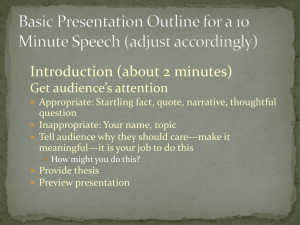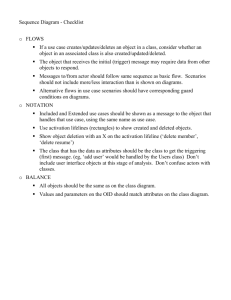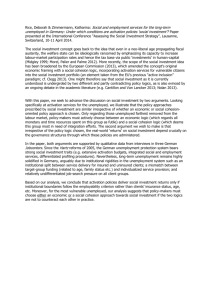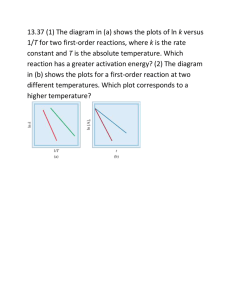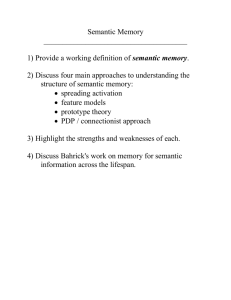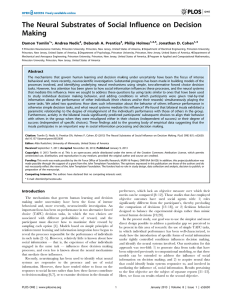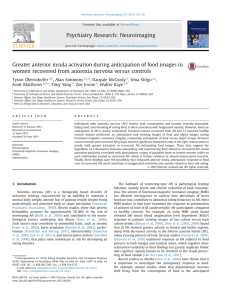File - Kathleen Funck, MCD
advertisement
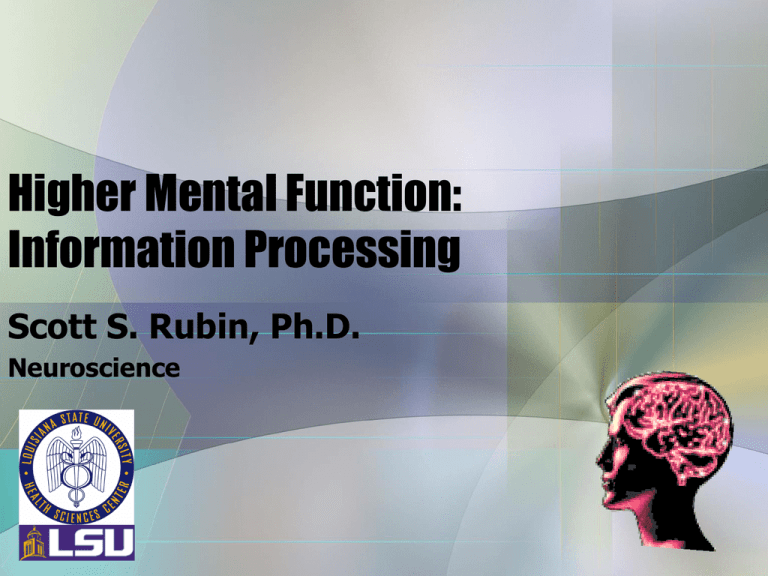
Higher Mental Function: Information Processing Scott S. Rubin, Ph.D. Neuroscience Basic Model of Information Processing • Critical components: – Sensory System – Permanent Memory (long term) • Active memory – Working Memory (short term) – Central Processor • Associated with incoming stimulus is a part of active memory • Working memory is where you are doing mental computations, brain figuring out what’s going on, pulling information between permanent and working memory. Working memory pulls out of the active memory. • Central processor- controlling everything that is going on Model Operation • From environmental stimuli – activation of sensory system – activation of LTM – activation of Active Memory – activation of Working Memory – evaluation by Central Processor & appropriate action • TOTE- test operate test exit • This is what your central processor is doing. CP checks what is going on neurologically, thoughts, attention, memory, processing, and it’s going to test and make sure you are doing what it is supposed to be doing. It’s working towards a goal. Test again to see if you are “done” on whatever it is and if it is done it will exit that operation. Often though it will do that second test and often repeat test operate. Best analogy is studying for an exam. Expansion of Model • Very good language but little conceptual language (meaning), these concepts we call semantic memory (not talking about language/ words, but talking about the knowledge of things) dementia is in this area, speak very well, but do not have the concept of things. In dementia, the brain fixes their syntactic error. The brain does not fix the semantic errors. Aphasia is the opposite, have the concepts, but don’t have the language. Structural Elements of Semantic Memory • These are the elements that make up our thought; In the “Language of the Mind”. • Concepts – Basic units of memory – cake-, garter • Propositions – Relational expressions -put cake on the nose, slide the garter • Schemata – Larger picture (made up of concepts and propositions) – Wedding These all activate the levels of thought and each other Neural Activation • Top-down Neural Activation • Bottom-up Neural Activation • Horizontal • Examples: – Blink 182 rocks – Motorcycle – Bachelor party Blink 182 broke up. Cage Divorce Processes Involved in Linguistic Comprehension • Is the product of: – Context – setting, appearance, surrounding info. – Expectations – Garden-Path – Inference – Based on what you know – if this – then that I could argue that these 3 elements cross over to more cognitive (or non-linguistic) analyses of interactions Garden-path: things lead you to some conclusion. If you are listening to a sentence you expect a certain conclusion. You know what the last word is, you park the car in the ______. N400 is disruptions in the garden-path. We can measure these things. Humor is dependent on this stuff because it break a lot of these rules. These are involved in linguistic and cognitive processes, semantic knowledge. Processes Involved in Linguistic Production • Ideation: Language of the Mind, neurologic semantic; cues, goals, ideational apraxia. • Translation: Changing to linguistic code • Implementation – Producing the message • Apraxia of speech struggles in the implementation. Implementation could be verbal, or written. Processing Module Transit field (does not leave the system) goes to the next level of the system We can only have one exit field, gnostic means to know Primary auditory cortex is an “exit field” because it’s going to another system. Modules have certain systems to why they work Processing Modules Modules Fodor’s Principle of Modularity • • • • • • • • Domain Specificity Mandatory Operation Limited Acces by the Central Processor Input Systems are Fast Informationally Encapsulated Shallow Outputs Fixed Neural Networks Ontogeny • Domain specificity- the info is specific to that domain, it’s important because we want our processing systems to be fast because it’s not worried about other information coming in from other domains, • Mandatory operation- it could be tiny signal, but as long as the brain picks it up, it’s going to work • Limited access by the CPU- (cpu is in the frontal lobe, where all the highest level of functioning is) • Shallow outputs-One system goes to another system • The network for processing is going to be the same for everyone, but everyone is different, so the structure might be a little different. • Ontogeny- set development meaning the systems emerge at birth in the same way across people. Summary • Keep in mind – behaviors within modules • Isolated function • Exploit strong modules or processes • Compensate for weak modules – or use strong to deblock the weak. Tonal Languages and Insula •What is a “tonal” language? Ex. Mandarin •One syllable "da“, tonal differences = –"to hang over something" ( da1 ) –"to answer" ( da2) –"to hit" ( da3) –"big" ( da4). • The syllable “ma” has four meanings. – mother – horse – hemp – scold - curse Update on Insula • Perceiving Pitch Patterns: Role of Insula. • Mandarin – Tonal Language – Pitch patterns contain lexical information. • Study compared Mandarin listeners & English listeners. • Madarin – listening to Mandarin – activity Left anterior Insula. Listening to English – Right Ant Insula activation. • English listeners – Both produce Right ant Insula activation

